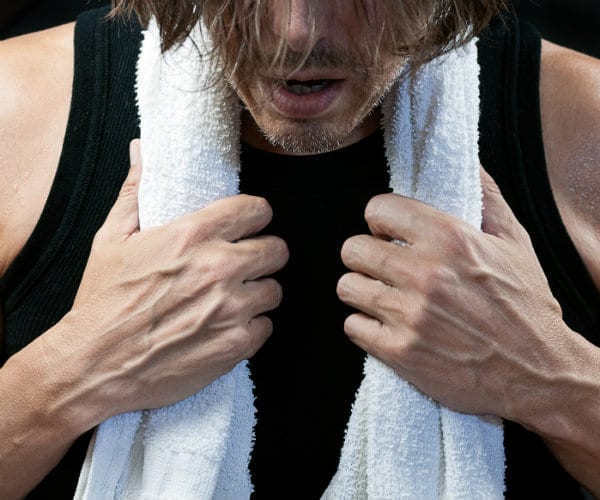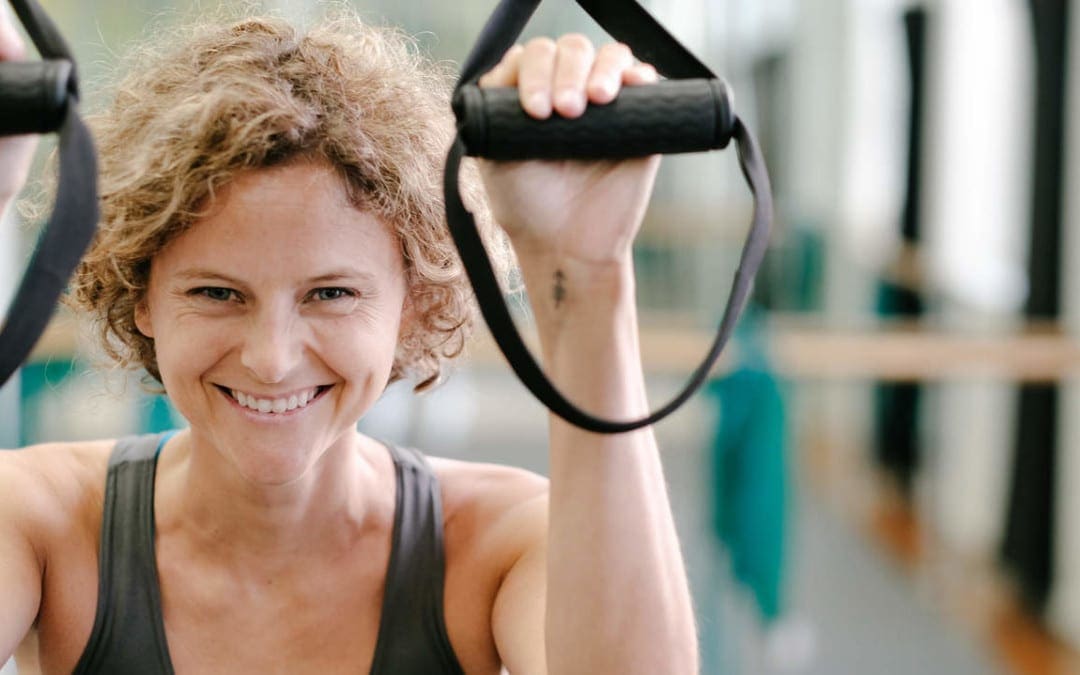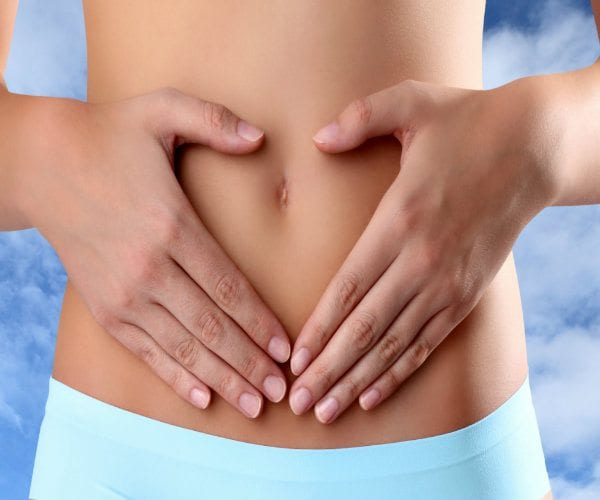Functional Medicine
Back Clinic Functional Medicine Team. Functional medicine is an evolution in the practice of medicine that better addresses the healthcare needs of the 21st century. By shifting the traditional disease-centered focus of medical practice to a more patient-centered approach, functional medicine addresses the whole person, not just an isolated set of symptoms.
Practitioners spend time with their patients, listening to their histories and looking at the interactions among genetic, environmental, and lifestyle factors that can influence long-term health and complex, chronic disease. In this way, functional medicine supports the unique expression of health and vitality for each individual.
By changing the disease-centered focus of medical practice to this patient-centered approach, our physicians are able to support the healing process by viewing health and illness as part of a cycle in which all components of the human biological system interact dynamically with the environment. This process helps to seek and identify genetic, lifestyle, and environmental factors that may shift a person’s health from illness to well-being.

by Dr Alex Jimenez DC, APRN, FNP-BC, CFMP, IFMCP | Diets, Fitness, Gastro Intestinal Health, Gut and Intestinal Health
When it comes to stomach discomfort during exercise, forget that old adage “no pain, no gain.” New research suggests that excessive strenuous exercise may lead to gut damage.
“The stress response of prolonged vigorous exercise shuts down gut function,” said lead author Ricardo Costa.
“The redistribution of blood flow away from the gut and towards working muscles creates gut cell injury that may lead to cell death, leaky gut, and systemic immune responses due to intestinal bacteria entering general circulation,” Costa added. He’s a senior researcher with the department of nutrition, dietetics and food at Monash University in Australia.
Researchers observed that the risk of gut injury and impaired function seems to increase along with the intensity and duration of exercise.
The problem is dubbed “exercise-induced gastrointestinal syndrome.” The researchers reviewed eight previously done studies that looked at this issue.
Two hours appears to be the threshold, the researchers said. After two hours of continuous endurance exercise when 60 percent of an individual’s maximum intensity level is reached, gut damage may occur. Costa said that examples of such exercise are running and cycling.
He said heat stress appears to be an exacerbating factor. People with a predisposition to gut diseases or disorders may be more susceptible to such exercise-related health problems, he added.
Dr. Elena Ivanina is a senior gastroenterology fellow at Lenox Hill Hospital in New York City. She wasn’t involved with this research but reviewed the study. She said that normal blood flow to the gut keeps cells oxygenated and healthy to ensure appropriate metabolism and function.
If the gut loses a significant supply of blood during exercise, it can lead to inflammation that damages the protective gut lining. With a weakened gastrointestinal (GI) immune system, toxins in the gut can leak out into the systemic circulation — the so-called “leaky gut” phenomenon, Ivanina said.
But, she underscored that exercise in moderation has been shown to have many protective benefits to the gut.
“Specifically, through exercise, patients can maintain a healthy weight and avoid the consequences of obesity,” she said. Obesity has been associated with many GI diseases, such as gallbladder disease; fatty liver disease; gastroesophageal reflux disease (GERD); and cancer of the esophagus, stomach, liver and colon. Regular moderate physical activity also lowers the risk of cardiovascular disease, type 2 diabetes and depression.
To prevent exercise-related gut problems, Costa advised maintaining hydration throughout physical activity, and possibly consuming small amounts of carbohydrates and protein before and during exercise.
Ivanina said preventive measures might help keep abdominal troubles in check. These include resting and drinking enough water. She also suggested discussing any symptoms with a doctor to ensure there is no underlying gastrointestinal disorder.
Costa recommended that people exercise within their comfort zone. If you have stomach or abdominal pain, “this is a sign that something is not right,” he said.
Individuals with symptoms of gut disturbances during exercise should see their doctor.
The study authors advised against taking nonsteroidal anti-inflammatory drugs — including ibuprofen (Advil, Motrin) or naproxen sodium (Aleve) — before working out.
Costa said there’s emerging evidence that a special diet — called a low FODMAP diet — leading up to heavy training and competition may reduce gut symptoms. FODMAP stands for fermentable oligosaccharides, disaccharides, monosaccharides, and polyols. FODMAPs are specific types of carbohydrates (sugars) that pull water into the intestinal tract.
The International Foundation for Functional Gastrointestinal Disorders suggests consulting a dietitian familiar with FODMAP diets. Such diets can be difficult to initiate properly on your own, the foundation says.
Costa also said there’s no clear evidence that dietary supplements — such as antioxidants, glutamine, bovine colostrum and/or probiotics — prevent or reduce exercise-associated gut disturbances.
The study results were published online recently in the journal Alimentary Pharmacology & Therapeutics.

by Dr Alex Jimenez DC, APRN, FNP-BC, CFMP, IFMCP | Functional Medicine, Natural Health, Remedies, Skin Health, Wellness
Summer’s officially just a week away, and millions of Americans are facing high odds of suffering from sunburn in coming months.
If you catch too many rays and wind up looking like a lobster, head straight to your kitchen. No kidding. Here are some surprising home remedies to soothe the burn that are as good as — or better than — commercially available skin creams and lotions:
Cucumbers: These vegetables are rich in vitamin C and caffeic acid, both of which help to soothe irritated skin and reduce swelling. Cukes also have compounds with analgesic properties to numb pain. You can slice cold cucumbers and apply them to burned areas. Better yet, make a paste by mashing or blending a couple of cucumbers and apply it chilled.
Lettuce: The greens have painkilling compounds that can take the sting out of sunburn. Boil the leaves in water, then strain and chill the liquid. Apply the fluid with cotton balls.
Potatoes: These tubers have been used throughout history to ease burns, bites, scrapes, and other skin problems. Blend one or two until they get pasty — you may have to add a splash of water — then chill the paste and apply via cotton balls.
Honey: This remedy for burns goes back to ancient Egyptian times. Honey reduces inflammation, provides nutrients to the damaged tissue and seals in moisture. It also has antiseptic properties. Just spread some of the sweet stuff where it hurts.
Apple cider vinegar: A common home remedy for a variety of problems from poison ivy to acid reflux to allergies, the cider also works on sunburn. You may want to dilute it a little since one of the active ingredients, acetic acid, may sting when applied. Use cotton balls or soak a washcloth in the solution for more coverage.
Coconut oil: You can use this for both protection — it has a sun protection factor (SPF) somewhere between 5 and 10 — and relief if you just stay out too long without any other sunscreen. Apply it directly to sunburned areas and you can feel its soothing effects as its medium-chain fats are absorbed into your skin and work their healing magic.
Oatmeal: Regular rolled oats will do just fine as the oatmeal’s polysaccharides will help to heal your skin. Put about 2 cups into a clean tube sock and add it to a tub of tepid water. Let it soak a few minutes, then climb in. Squeeze out the sock every few minutes, which will turn the water cloudy. When you’re done, air dry or pat yourself off gently with a soft towel.
Yogurt: Yogurt contains probiotics and proteins that will help to heal your skin. Make sure the yogurt is plain with no flavoring and also that it has live, active cultures. Spread it around the burned areas, let it sit for about five minutes, then rinse it off with tepid water.
Witch hazel: The tannins from the plant’s liquid extract reduce inflammation, kill bacteria and repair damaged skin. Use cotton balls or a clean cloth to dab it on sore areas. Reapply as needed.
Aloe vera: The gel from the fleshy leaves of this plant is rich in glyconutrients that soothe and heal all kinds of skin problems, including burns. Slice open a leaf and the gel will ooze out. Apply it directly to sunburned areas.
When suffering from sunburn, also be sure to drink plenty of water, because you’re probably dehydrated too. And try to avoid harsh soaps that will wash away the natural oils of your skin and further dry it out.
Of course, the best sunburn remedy is prevention. That means staying out of the sun during peak hours, typically between 10 a.m. and 2 p.m. And dermatologists strongly recommend wearing a hat, covering exposed areas with clothing and using sunscreen with a SPF of 15 or higher.
Look for sunscreen labeled “full spectrum” to make sure it screens out both UVA and UVB rays. But beware that a lot of sunscreens have toxic chemicals. Your best bet is to check out the Environmental Working Group’s Skin Deep database online to find the safest products.

by Dr Alex Jimenez DC, APRN, FNP-BC, CFMP, IFMCP | Gut and Intestinal Health, Integrative Medicine, Wellness
Hippocrates, the father of modern medicine, stated all healing starts in the gut. And researchers carry on to prove him accurate as they unravel how a healthier gut microbiome plays a function in fat decline, disease prevention, and much additional. As we know, diet plays a very important function in keeping a healthier gut setting and dysbiosis, or a gut-flora imbalance, ramps up inflammation, and triggers lots of diseases like inflammatory bowel disease.
As a health practitioner of chiropractic, gut health gives insight into why my clients (in particular overweight or overweight clients) establish osteoarthritis in non-fat-bearing joints like the wrist, by pointing to a difficulty with systemic inflammation. And when my clients have an understanding of how an out-of-whack gut impacts digestion, they do not generally make the link concerning gut health and joint agony or other issues like head aches, mood swings, eczema, fat acquire, or tiredness that frequently accompany agony.
Gut issues can trigger agony.
How does this perform? To start with, consider that truth that your gut maintains a reliable barrier concerning your digestive tract and your inside setting, enabling important vitamins to go by when preserving out anything else. Retaining the integrity of the gut is a a person-cell-thick barrier that varieties a limited junction, which keeps out foreign invaders like bacteria, poisons, and big undigested foods particles. When these limited junctions crack down, that barrier will become infected and porous bacteria, poisons, and undigested foods particles start off slipping by. We connect with these foreign invaders antigens, or foreign substances that trigger an immune response. A double whammy ensues: You are not finding optimal vitamins when foreign invaders barge by, a problem termed intestinal permeability or leaky gut.
This link has anything to do with inflammation.
Your immune program responds with antibodies, which assault and ruin these antigens. When an antibody binds with an antigen, an immune advanced happens. Persistent leaky gut ramps up these immune complexes they flow into all-around your entire body and deposit into several tissues and organs including�you guessed it�skeletal muscle tissues and joints, creating additional inflammation. Leaky gut also contributes to autoimmune conditions, or immune responses towards unique tissues that develop destruction and decline of functionality. When that takes place in your joints, inflammation makes agony, inflammation, and stiffness. When multifactorial, researchers link leaky gut with rheumatoid arthritis as bacterial merchandise slip by your gut lining and deposit in your joints, creating an immune reaction.
You can lessen agony by healing the gut.
When my clients recover their leaky gut, they lastly set out the fireplace that feeds inflammation. That healing calms their immune program, reverses autoimmune conditions like rheumatoid arthritis, and decreases agony. And you can do this in a natural way without the need of medicine or surgical treatment. Further than concentrating on a entire-food items diet that gets rid of foods intolerances, I�ve located these 7 tactics to improve gut health to reverse agony:
1. Stage up your fiber.
Studies display that enough dietary fiber could possibly be your greatest technique to keep a healthier microbiome. Amid its benefits, fiber aids pull poisons from your gut for elimination.
2. Take in additional anti-inflammatory food items.
Omega-three fatty acids have anti-inflammatory qualities and aid alleviate agony. If wild-caught fish isn�t aspect of your diet, just take a large-high quality fish oil nutritional supplement with about three,000 milligrams of EPA and DHA.
three. Repopulate smartly.
Probiotics aid re-set up a balanced gut microbiome. Fermented food items like coconut yogurt, kefir, and sauerkraut are great sources of probiotics, but if you do not on a regular basis consume them, appear for a professional multistrain probiotic nutritional supplement with billions of microorganisms.
4. Get enough vitamin D.
Scientists link vitamin D deficiencies with several issues like inflammation, leaky gut, and autoimmune conditions like rheumatoid arthritis and chronic agony. Request your health practitioner for a twenty five-hydroxy vitamin D take a look at and perform with him or her to attain and keep optimal ranges.
5. Ditch the gluten.
If you have joint agony or other sorts of agony, gluten�s gotta go. Gliadin is the protein located in wheat, rye, and barley lots of men and women are delicate to or that leads to an outright autoimmune reaction. Your immune program sees gluten as the enemy and will unleash weapons to assault it, triggering inflammation in your gut, joints, and other regions of the entire body.
6. Avoid GMOs.
Eradicating genetically modified food items (GMOs) will become very important for healing your leaky gut considering the fact that GMOs destruction your digestive tract and may possibly be a person of the leads to of your leaky gut in the initial place.
7. Nix nightshades.
Colourful bell peppers, tomatoes, potatoes, and eggplants supply vitamins and phytonutrients, but they can be a difficulty for clients with leaky gut, autoimmune disease, or osteoarthritis. Nightshades incorporate glycoalkyloids, which can develop gut issues.

by Dr Alex Jimenez DC, APRN, FNP-BC, CFMP, IFMCP | Cancer Health, Fitness, Health, Wellness
The first sign was itchy skin. My thighs itched. My belly itched. Everything itched. I couldn’t see any rashes or dry skin, but after two months, the sensation got so bad that it distracted me at work.
I finally went to a dermatologist in December 2007. We considered potential explanations. Could it be eczema? Probably not; I showed none of the classic markers of the disorder. At the end of the appointment, I mentioned that I had a lump above my collarbone. It might be getting bigger, I told her, but I wasn’t sure.
She examined the bump and told me it was an enlarged lymph node, a gland that helps the body fight off infections. She advised me to see a general practitioner for a full checkup. She even called me a few times the following week to remind me.
RELATED: 6 Things Your Dermatologist Wants You to Know About Skin Cancer
So I went to a general physician to have blood work done and take a chest x-ray. Then came additional tests, including a tissue biopsy of the lump. That biopsy confirmed the last thing I expected: I had stage 2A Hodgkin’s lymphoma, a blood cancer that often strikes adults in their 20s and 30s. Itchy skin, it turns out, can be a symptom.
I collapsed into my mom’s arms when I got the diagnosis. “I just don’t want to die,” I told her. I was 23, and I had so much more life to live.
The battle begins
I started chemotherapy two weeks later in my doctor’s office, enduring 12 treatments over six months. I’d get the drugs every other Thursday and take off work the following Monday, when the steroids that were supposed to ease side effects like nausea and pain wore off. Apart from that—and the wig I wore to conceal my bald head—I kept my life normal. I went my job as a fundraising event planner and met friends for dinner.
By summer, I was in remission. Yet I wasn’t feeling like my old self, and I knew I wanted to get strong again. When two friends told me they were running the Nike Women’s Marathon in San Francisco in my honor (fundraising for the Leukemia & Lymphoma Society), I was moved and motivated. With my doctor’s okay, I started to train for the Disney Half Marathon in Orlando in January 2009.
RELATED: 11 Training Tips for Running Your First Half-Marathon
I admit it was a little crazy. I’d been a runner pre-cancer, but I had never attempted a race longer than 10K. Still, I did it—I ran the half in two hours and eight minutes. Victory, right? Not quite. The weekend of my half-marathon, I noticed a familiar feeling near my collarbone. Could the lump be coming back?
Returning to normal life in remission
I should mention that coincidentally, I’d recently started working in the fundraising department at Memorial Sloan Kettering Cancer Center (MSKCC), a top cancer hospital that my doctor was affiliated with. I wore my wig when I interviewed at Memorial in September 2008, but I didn’t mention that I had been diagnosed with cancer less than a year earlier. I wanted to be hired because I had the skills they were looking for, not my health history. Luckily, I got the job. But right after I ran my half in January, my doctor confirmed that my Hodgkin’s lymphoma was back.
Lauren vs. cancer: round two
My doctors told me that treatment would be more aggressive the second time around, and I had to be admitted into the hospital for most of it: two preconditioning chemotherapy treatments were followed by two weeks of radiation followed by four-day rounds of high-dose chemo. “Uncomfortable” doesn’t begin to describe the high fevers I struggled with and such severe throat pain that it hurt to eat.
RELATED: 14 Ways to Soothe a Sore Throat
I also underwent a stem cell transplant: a catheter transfers my own cells, collected by medical staffers weeks earlier, back into my body. The hope was that the newly transferred cells would prompt my system to produce healthy new blood cells. It’s a milestone; people in the medical world call the date of your stem cell transplant your second birthday. I celebrated my 25th birthday in the hospital on April 17. A week later, I had my ‘second birthday’ when I got my transplant.
A life dedicated to fitness
I left the hospital in May and focused my life on recovery and getting strong again. I’ve always loved trying new classes and getting better at old ones. After all I’d been through, working out felt even more rewarding. Nearly every Saturday for the next five years, I’d be at Core Fusion Barre class at Exhale or sweating it out at SoulCycle.
My teachers inspired me to develop a level of strength I didn’t know I had, and the thrill I felt when I realized I was getting better motivated me. With time, I made the decision to devote my life to inspiring others through fitness. In fall 2014, I signed up for barre teacher training with Exhale. Two hundred hours later, I was certified.
To get our best wellness advice delivered to you inbox, sign up for the Healthy Living newsletter
In January 2015, I left the security of a full-time job and founded Chi Chi Life. This is my way of pursuing fitness while keeping up my love for fundraising, event planning, and cancer advocacy. I teach barre at Exhale and Pilates and TRX classes at Flex Studios in New York City while also working with clients to plan philanthropic events.
For me, fitness is all about community and connection. I’ve run several half marathons since my cancer’s been in remission, raising more than $75,000 for causes I’m passionate about. I even ran the New York City Marathon, which took me past the Memorial Sloan Kettering Cancer Center building. I wish there were words to capture what it felt like to run past the place that saved my life—and helped me discover my life’s mission.

by Dr Alex Jimenez DC, APRN, FNP-BC, CFMP, IFMCP | Chiropractic, Mind Body and Spirit
This article originally appeared on Time.com.�
In ballet training, the barre is the horizontal handrail dancers grip while perfecting their technique. Barre-style workouts take those classic ballet warm-up exercises and reimagine them for a much wider audience.
While it may seem like a recent phenomenon, barre strength and flexibility training have been in vogue since the times of Louis XVI, says Ginny Wilmerding, a research professor at the University of New Mexico. The modern-day version is primarily a leg-and-butt workout; from your ankles and calves up through your knees, hips and glutes, barre movements are all about improving range of motion, strength and flexibility in your lower half by forcing one of your legs to perform graceful and precise movements while the other supports and stabilizes you, she says.
The sales pitch for all of that excruciating precision is that if you want a dancer�s body, you should train like a dancer. �I mean, who doesn�t want to look like a prima ballerina?� says Michele Olson, a professor of exercise physiology at Auburn University, Montgomery. �You�re talking about nice, lean muscle tone and perfect posture.�
RELATED:�This Barre-Inspired Move Helped Sculpt Lea Michele�s Butt
But just as going to football practice won�t make you look like a linebacker, barre training is more likely to help you achieve a ballerina�s muscle endurance and balance than her body shape.
Those are valuable assets that do not come with every workout. Unlike muscle strength, endurance determines your muscle�s ability to work for long periods of time. (Strength may allow you to lift a weight, but muscle endurance dictates how many times you can lift it.) Barre is also effective at targeting the �support and steady� muscles that run close to your bones and tie into your core and spine�the ones most of us neglect when we spend a lot of time sitting or engaged in forward and backward activities like running, says Olson. �Real 360-degree balance involves a lot of those side-to-side muscles a lot of us don�t use much, and so they become weak,� she says.
Barre is also low impact and has a built-in handhold, making it a relatively safe form of exercise. Especially for older people at risk for falls, barre may be a good way to improve stability and avoid accidents.
But the workout is not without risks, especially for the back and knees. One example: �Ballerinas are taught to tuck the pelvis so that the low back that normally curves inward loses its curve and looks straight,� Olson says. While dancers do that for their art, tucking the pelvis can lead to back pain and injuries for the average exerciser.
Most barre classes have abandoned that sort of strict pelvis-tucking, but Olson says some classes still include extreme pli� knee bends that can increase a person�s risk for knee injury. Especially if you decide to go for a run right after your barre class, the �excessive� amount of pressure that some barre moves place on your knees could lead to sprains or strains.
RELATED:�These Super-Fit Moms Are an Endless Source of Inspo
�There are some things dancers do that others have no need for,� says Wilmerding, who advises to take the training slowly and to focus on form, rather than trying to get an intense muscle or cardio workout from the practice. Like tai chi, �you�re working on stability and flexibility and strength, but you have this higher goal of control and aesthetics.�
Another point to keep in mind is that even though barre class brings a good core workout, you may be torching fewer calories than you think. One of the few published studies that has looked at barre�s cardiovascular and metabolic demands found that the activity�at least in its traditional form�doesn�t burn many calories and more closely resembles walking than running in terms of its intensity.
�Like any form of exercise, I think you need some variety,� Olson says. �Do it three to five days a week if you want to get the most out of it, but do something different with a cardiovascular component on the other days.�

by Dr Alex Jimenez DC, APRN, FNP-BC, CFMP, IFMCP | Adrenal Fatigue (AF), Gut and Intestinal Health, Natural Health, Wellness
Chronic fatigue syndrome, a baffling disorder that affects an estimated 1 million Americans, has been strongly linked to imbalances in gut bacteria in a new study from Columbia University’s Mailman School of Public Health.
The researchers found abnormal levels of specific gut bacteria are found in people with the condition — formally known as myalgic encephalomyelitis/ chronic fatigue syndrome (ME/CFS), according to the study published in the journal Microbiome.
The findings offer new hope for an effective new way to diagnose and treat ME/CFS, a complex, sometimes-debilitating disorder that can interfere with activities of daily living.
Symptoms include extreme fatigue after exertion, muscle and joint pain, cognitive dysfunction, sleep disturbances, and orthostatic intolerance (light-headedness, dizziness, or fainting when standing upright).
Up to 90 percent of ME/CFS patients also have irritable bowel syndrome IBS, past research has shown. But the Columbia University study is among the first to disentangle microbiome imbalances in individuals with ME/CFS and IBS.
“Individuals with ME/CFS have a distinct mix of gut bacteria and related metabolic disturbances that may influence the severity of their disease,” says co-lead investigator Dr. Dorottya Nagy-Szakal.
The findings suggest sufferers may be able to ease their symptoms by incorporating certain probiotics — healthy bacteria — in their diets, to balance their gut bacteria.
To reach their conclusions, the researchers tracked 50 ME/CFS patients and 50 others without the condition. They tested subjects’ fecal samples for bacterial species, and blood samples for immune molecules.
The study’s key findings show that:
- Levels of distinct intestinal bacterial species —Faecalibacterium, Roseburia, Dorea, Coprococcus, Clostridium, Ruminococcus, Coprobacillus — are strongly associated with ME/CFS.
- The abundance of these species appears to be predictive of a ME/CFS diagnosis.
- An abundance of Alistipes and low levels of Faecalibacterium are the top biomarkers of ME/CFS with IBS. Increased Bacteroides abundance and decreased Bacteroides vulgatus are the top biomarkers of ME/CFS without IBS.
The researchers also noted the severity of patients’ symptoms — such as pain and fatigue — correlated with the abundance of distinct bacterial types.
“Our analysis suggests that we may be able to subtype patients with ME/CFS by analyzing their fecal microbiome,” says co-lead investigator Dr. Brent L. Williams, Ph.D. “Subtyping may provide clues to understanding differences in manifestations of disease.”
The study also points toward a possible mechanism behind the development of ME/CFS.
“ME/CFS may involve a breakdown in the bidirectional communication between the brain and the gut mediated by bacteria, their metabolites, and the molecules they influence,” explains senior author Dr. W. Ian Lipkin.
“By identifying the specific bacteria involved, we are one step closer to more accurate diagnosis and targeted therapies.”
So far, researchers have not identified the cause of ME/CFS. Nor are there any standard diagnostic lab tests or federally-approved treatments for the condition. For reasons that are unclear, women are two to four more times likely than men to have ME/CFS.
Because MD/CFS is so variable, treatment focuses on individual symptom control. Conventional approaches include prescription medications to treat anxiety, depression, and insomnia; graded exercise, physical therapy, and psychological counseling including cognitive-behavioral therapy (CBT).
Adjunctive therapies to help manage pain and fatigue include:
- Acupuncture.
- Biofeedback.
- Deep breathing exercises.
- Hypnosis.
- Massage.
- Meditation.
- Muscle relaxation techniques.
- Yoga or tai chi.
- Preliminary but inconclusive research suggests that some natural remedies may be helpful for ME/CFS, according to the Mayo Clinic. These include:
- Magnesium injected into the muscles of people with low red blood cell magnesium.
- A combination supplement containing fish oil and evening primrose oil.
- Melatonin.
- Nicotinamide.
- Adenine dinucleotide hydrate (NADH).
- Coenzyme Q10.
- Propionyl-L-carnitine.
- D-ribose.
Although the new Columbia University study suggests that probiotic supplements may be helpful for ME/CFS, more research is needed, experts say.
A 2009 study of 39 ME/CFS patients, however, showed that the Lactobacillus casei strain Shirota (LcS) was associated with significantly reduced anxiety symptoms compared to placebo.

by Dr Alex Jimenez DC, APRN, FNP-BC, CFMP, IFMCP | Gastro Intestinal Health, Gut and Intestinal Health, Natural Health, Probiotics, Wellness
Breastfeeding has long been linked to a variety of health benefits in babies, and a new study suggests that bacteria transferred from mothers to their nursing infants might be at least partly responsible.
Researchers focused on what’s known as the microbiome, or all of the bacteria, viruses and fungi that live in and on the body. They tested 107 mother-baby pairs for organisms on women’s breasts and in their milk, and they also examined babies’ stool as a way of determining what types of organisms were in the infant gut microbiome.
While they found distinct types of bacteria in milk, breast tissue and infant stool, researchers also found infants’ gut microbial communities matched the bacteria in their mothers’ milk and on their mothers’ skin much more than it resembled samples from other women in the study.
That suggests each mother’s milk was a major contributor to her own infant’s gut microbiome.
“We were able to show that there are bacteria in milk and that these bacteria could be traced to bacteria in infant stools,” said senior study author Dr. Grace Aldrovandi, chief of the division of infectious diseases at Mattel Children’s Hospital at the University of California, Los Angeles.
“This supports the hypothesis that milk microbes are a mechanism by which breastfeeding provides benefit,” Aldrovandi said by email.
Pediatricians recommend that mothers exclusively breastfeed infants until at least 6 months of age because it is tied to reduced risk for babies of ear and respiratory infections, sudden infant death syndrome, allergies, childhood obesity and diabetes.
Mothers may benefit too, with longer periods of breastfeeding linked to lower risks of depression, bone deterioration and certain cancers.
Based on lab tests of bacteria found in milk, on skin and in stool in the current study, researchers estimated that babies who got at least 75 percent of their nutrition from breast milk during the first month of life received about 28 percent of their gut bacteria from their mother’s milk. These babies also got about 10 percent of their gut bacteria from mothers’ skin and 62 percent from sources researchers didn’t determine.
The more babies nursed, the more their gut bacterial community changed to resemble what was found in their mother’s milk.
And in babies who got more of their nutrition exclusively from breastfeeding, microbial communities were slightly more diverse overall and different microbes predominated compared to babies who breastfed less.
One limitation of the study is that researchers didn’t assess the origins of the breast milk bacteria or other bacterial communities from the mother that might have contributed to the infant gut microbiome, the authors note. Nor did they assess any effects on the babies’ health based on differences in their microbiomes.
Still, the results build on previous research suggesting that the infant gut microbiome is different for breast-fed and formula-fed babies, said Dr. Alexander Khoruts, a researcher at the University of Minnesota in Minneapolis who wasn’t involved in the study.
“We’ve always assumed that most of these microbes come from the mother,” Khoruts said by email. “They found that breastfeeding is the major source of microbial transfer during the early months of life, and I think the study provides supportive evidence for the current recommendations of exclusive breastfeeding for the first six months and continued breastfeeding to 12 months.”
Many factors can influence the infant gut microbiome, including breastfeeding, whether babies arrived by vaginal or surgical delivery and antibiotic use, noted Jose Clemente, a researcher in the genetics and genomic sciences at the Icahn School of Medicine at Mount Sinai in New York.
“The beneficial effects of breastfeeding are well known, and this study provides further evidence by demonstrating that probiotic bacteria found in breast milk can be transferred to the infant,” Clemente, who wasn’t involved in the study, said by email. “Every little bit helps, so even some amount of breast milk can be a source of beneficial bacteria for babies.”










